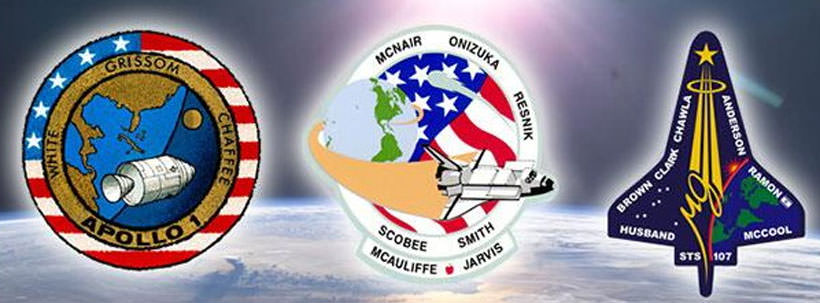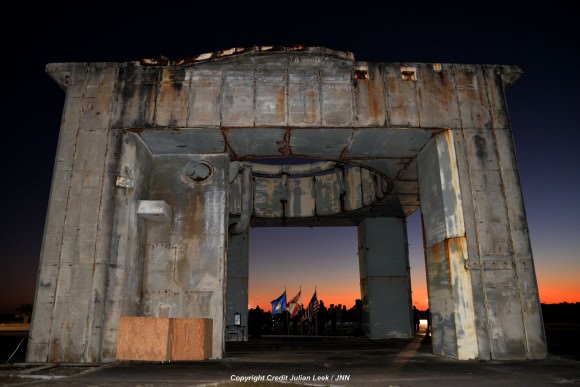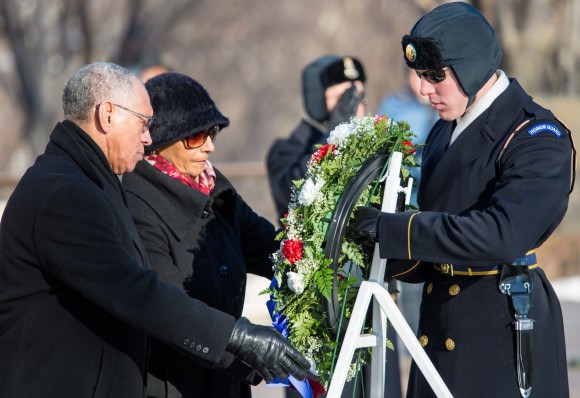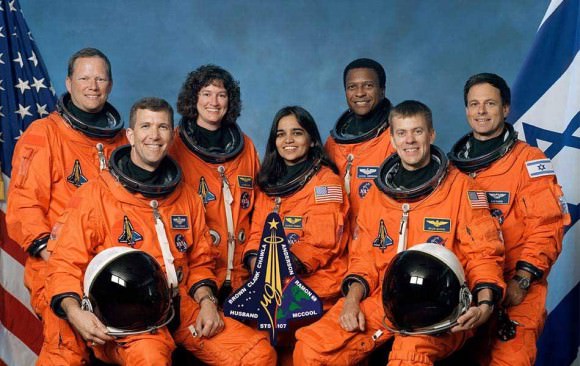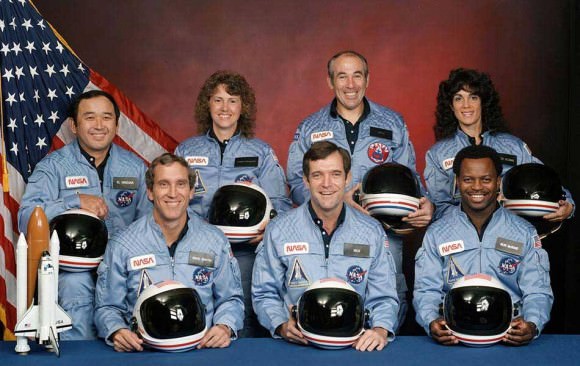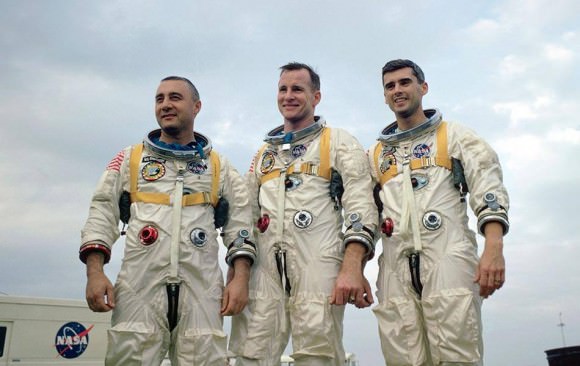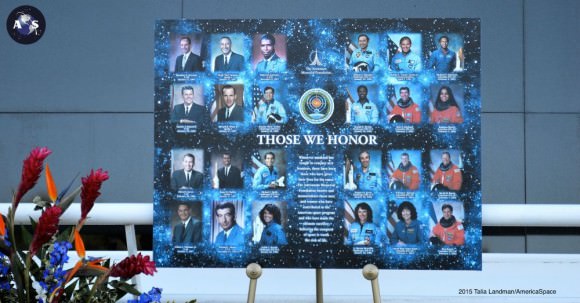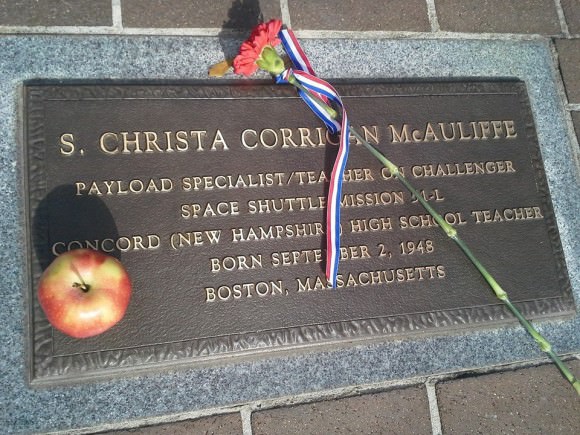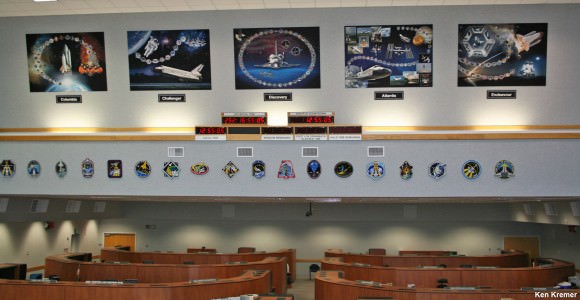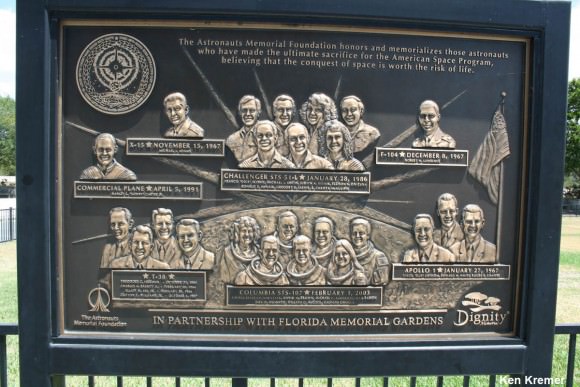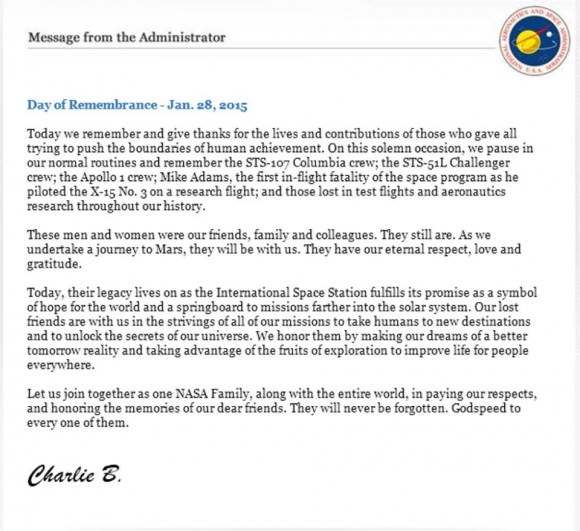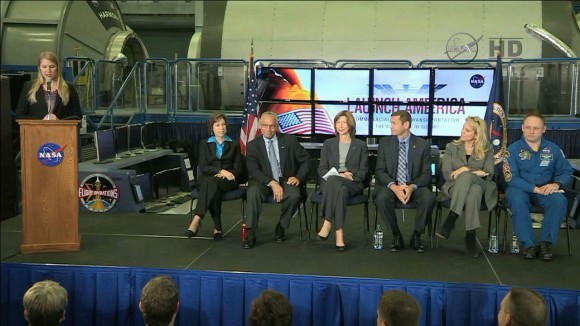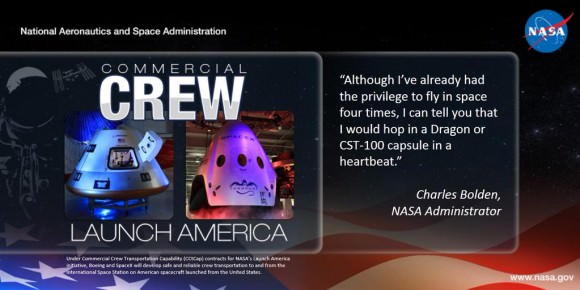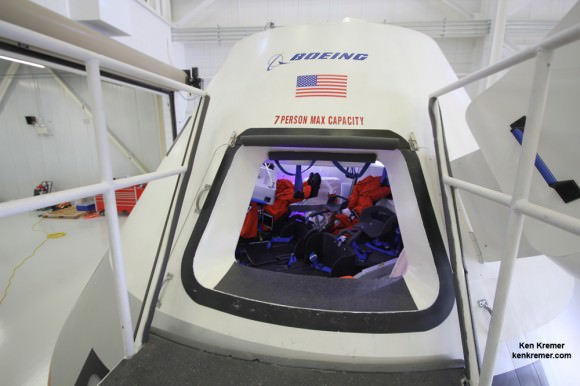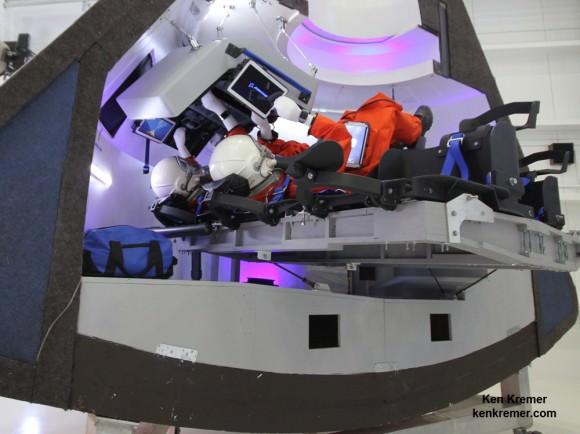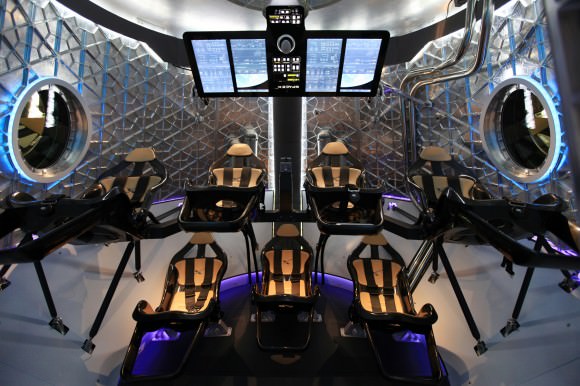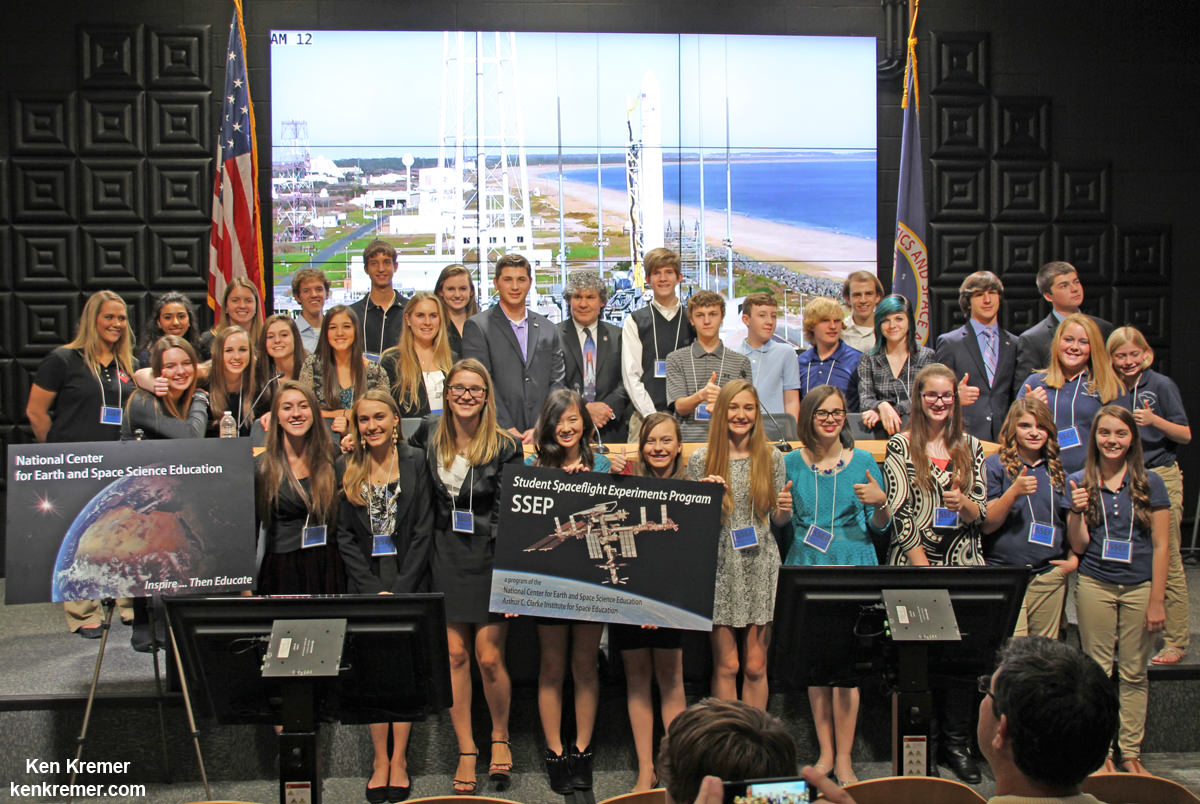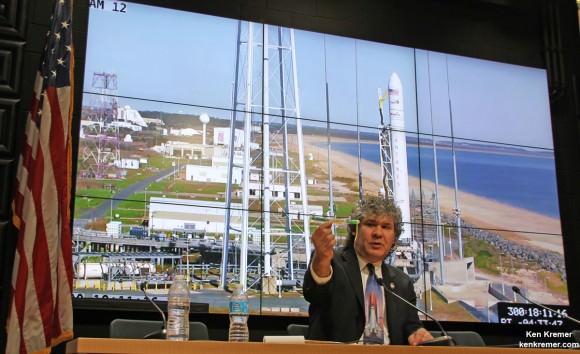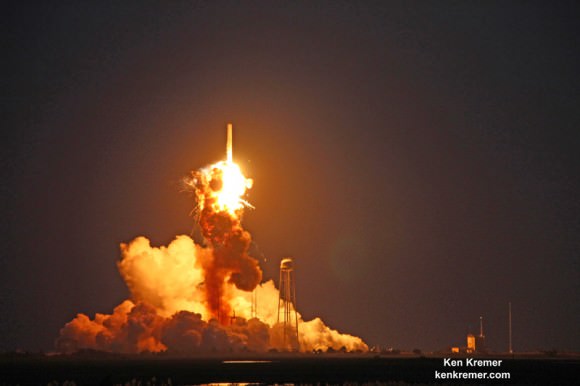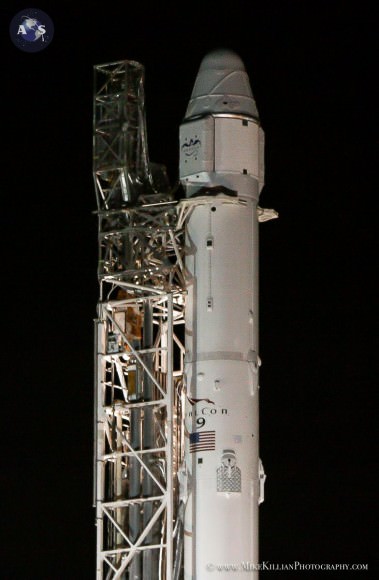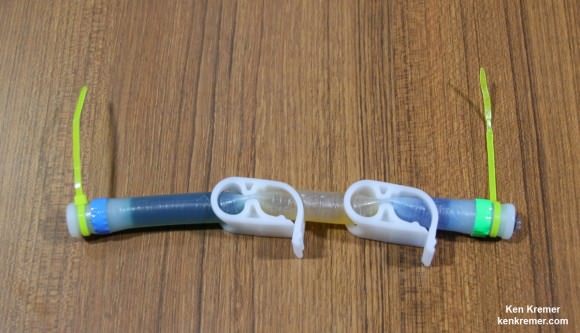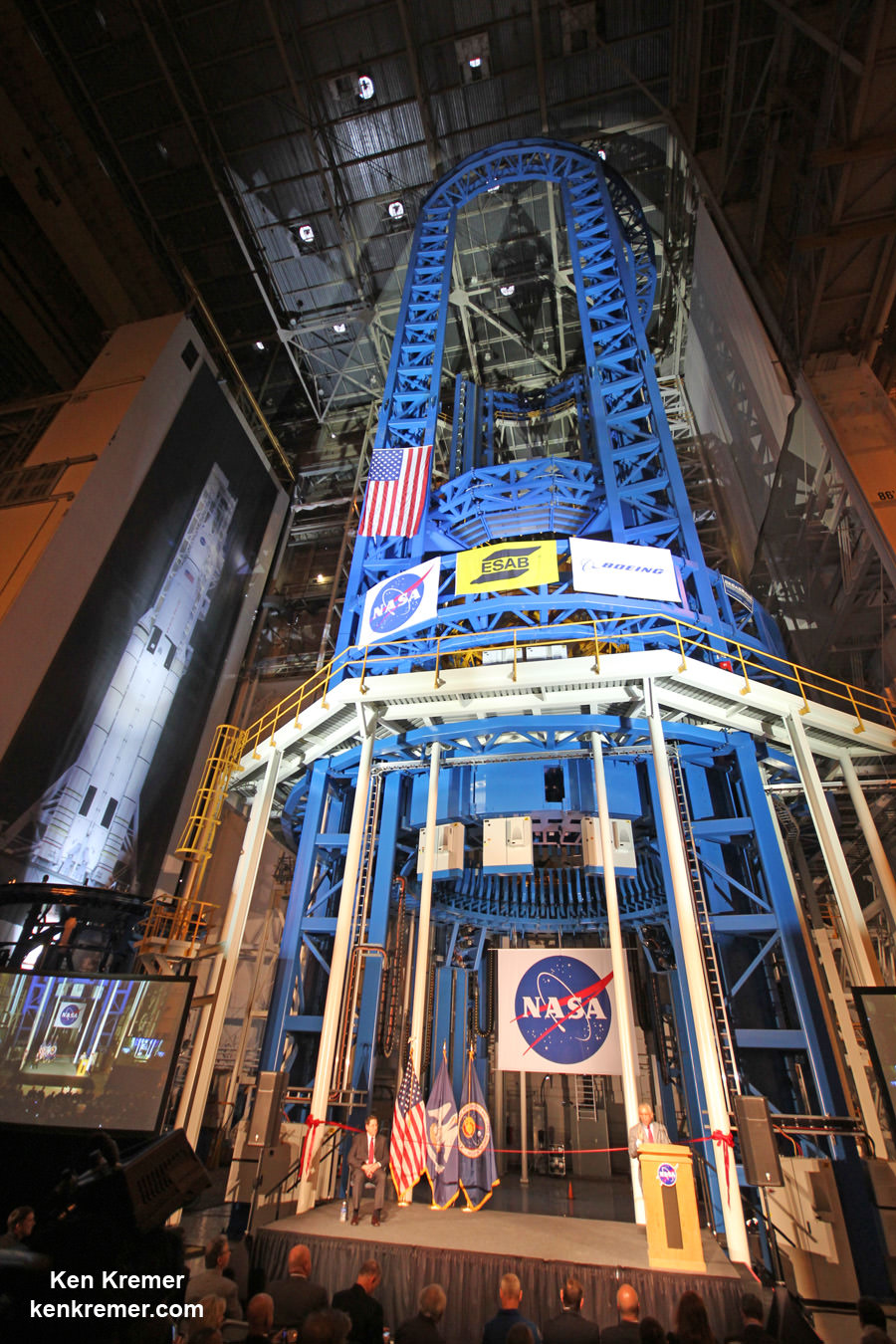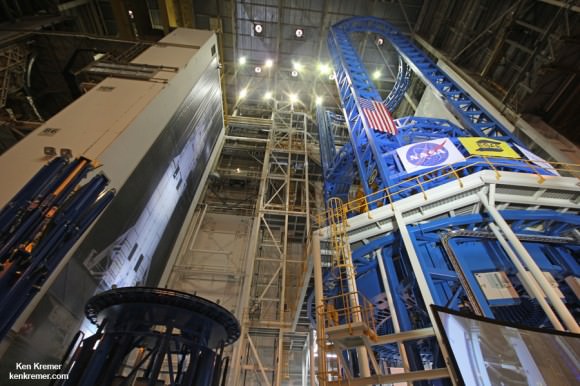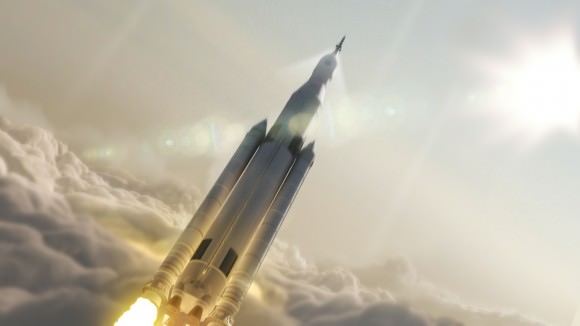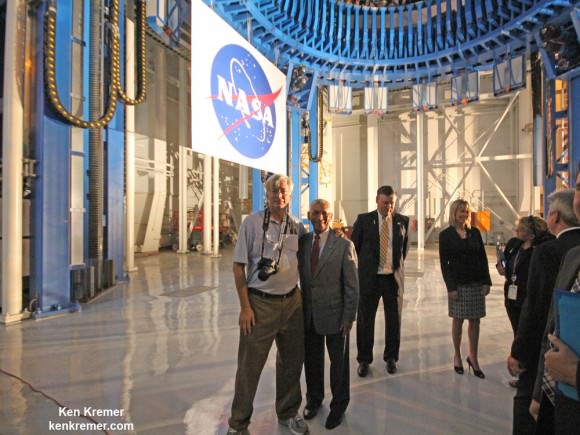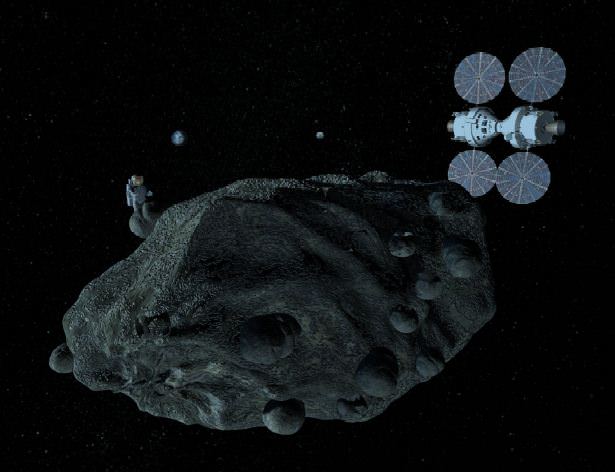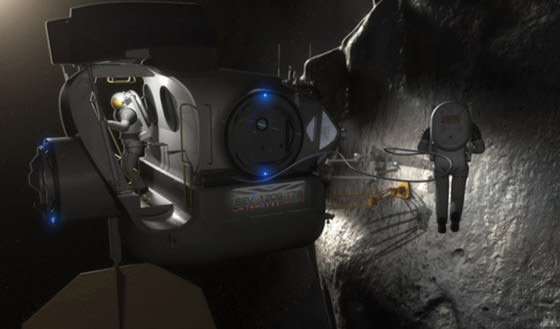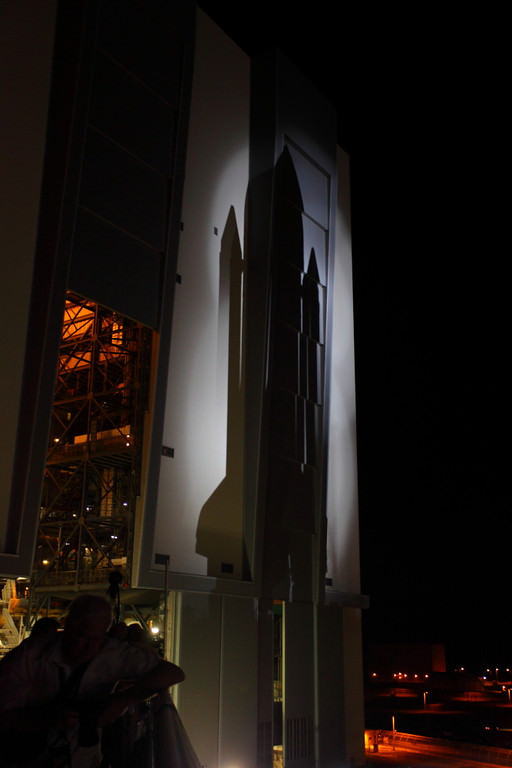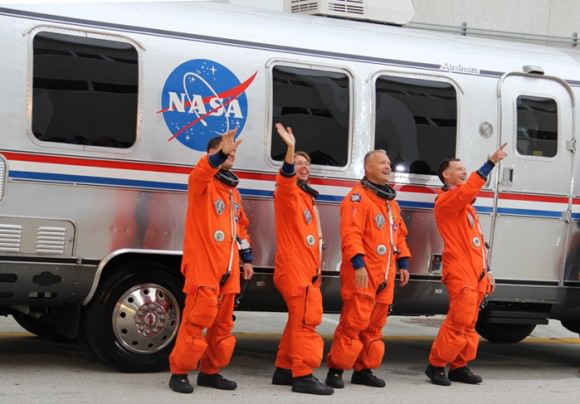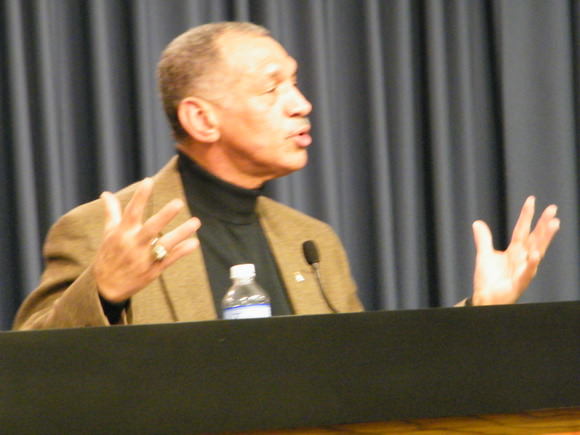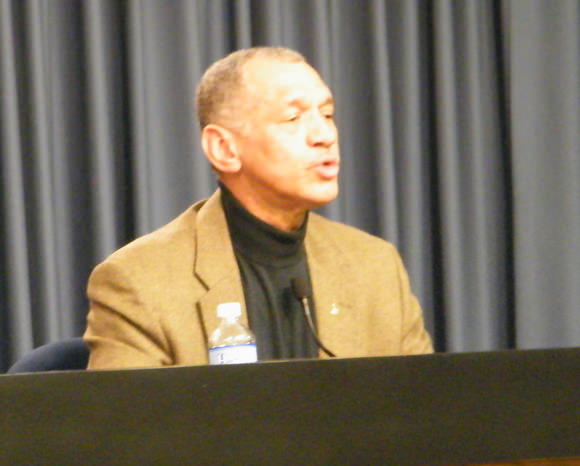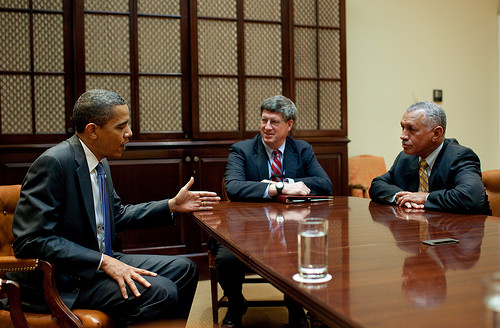The Obama Administration today (Feb. 2) proposed a NASA budget allocation of $18.5 Billion for the new Fiscal Year 2016, which amounts to a half-billion dollar increase over the enacted budget for FY 2015, and keeps the key manned capsule and heavy lift rocket programs on track to launch humans to deep space in the next decade and significantly supplements the commercial crew initiative to send our astronauts to low Earth orbit and the space station later this decade.
NASA Administrator Charles Bolden formally announced the rollout of NASA’s FY 2016 budget request today during a “state of the agency” address at the Kennedy Space Center (KSC), back dropped by the three vehicles at the core of the agency’s human spaceflight exploration strategy; Orion, the Boeing CST-100 and the SpaceX Dragon.
“To further advance these plans and keep on moving forward on our journey to Mars, President Obama today is proposing an FY 2016 budget of $18.5 billion for NASA, building on the significant investments the administration has made in America’s space program over the past six years,” Administrator Bolden said to NASA workers and the media gathered at the KSC facility where Orion is being manufactured.
“These vehicles are not things just on paper anymore! This is tangible evidence of what you [NASA] have been doing these past few years.”
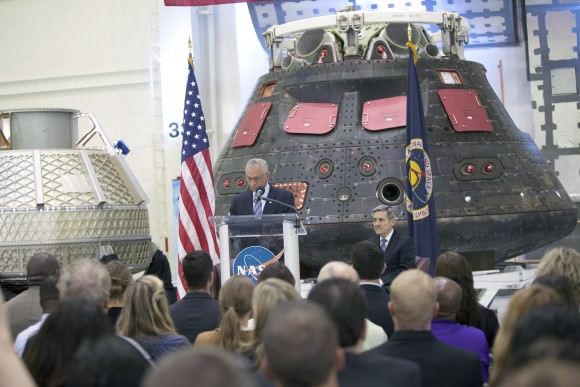
Bolden said the $18.5 Billion budget request will enable the continuation of core elements of NASA’s main programs including first launch of the new commercial crew vehicles to orbit in 2017, maintaining the Orion capsule and the Space Launch System (SLS) rocket to further NASA’s initiative to send ‘Humans to Mars’ in the 2030s, extending the International Space Station (ISS) into the next decade, and launching the James Webb Space Telescope in 2018. JWST is the long awaited successor to NASA’s Hubble Space Telescope.
“NASA is firmly on a journey to Mars. Make no mistake, this journey will help guide and define our generation.”
Funding is also provided to enable the manned Asteroid Redirect Mission (ARM) by around 2025, to continue development of the next Mars rover, and to continue formulation studies of a robotic mission to Jupiter’s icy moon Europa.
“That’s a half billion-dollar increase over last year’s enacted budget, and it is a clear vote of confidence in you – the employees of NASA – and the ambitious exploration program you are executing,” said Bolden.
Overall the additional $500 million for FY 2016 translates to a 2.7% increase over FY 2015. That compares to about a 6.4% proposed boost for the overall US Federal Budget amounting to $4 Trillion.
The Boeing CST-100 and the SpaceX Dragon V2 will restore the US capability to ferry astronauts to and from the International Space Station (ISS).
In September 2014, Bolden announced the selections of Boeing and SpaceX to continue development and certification of their proposed spaceships under NASA’s Commercial Crew Program (CCP) and Launch America initiative started back in 2010.
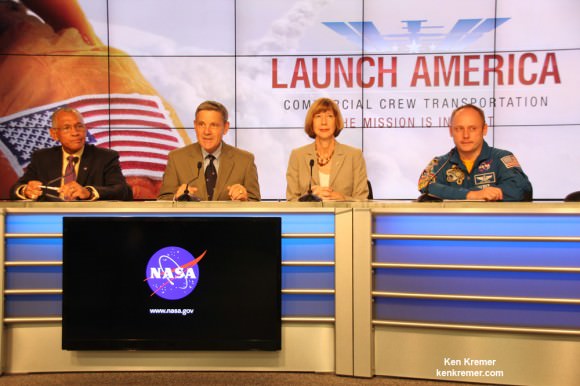
Since the retirement of the Space Shuttle program in 2011, all NASA astronauts have been totally dependent on Russia and their Soyuz capsule as the sole source provider for seats to the ISS.
“The commercial crew vehicles are absolutely critical to our journey to Mars, absolutely critical. SpaceX and Boeing have set up operations here on the Space Coast, bringing jobs, energy and excitement about the future with them. They will increase crew safety and drive down costs.”
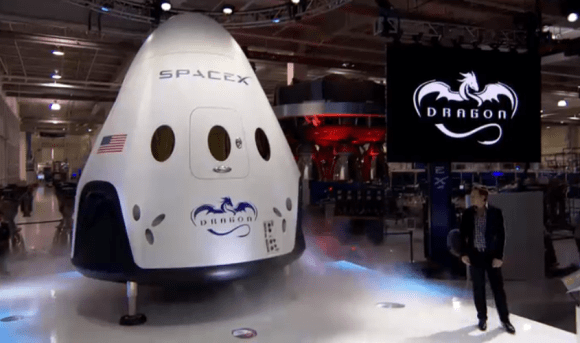
CCP gets a hefty and needed increase from $805 Million in FY 2015 to $1.244 Billion in FY 2016.
To date the Congress has not fully funded the Administration’s CCP funding requests, since its inception in 2010.
The significant budget slashes amounting to 50% or more by Congress, have forced NASA to delay the first commercial crew flights of the private ‘space taxis’ from 2015 to 2017.
As a result, NASA has also been forced to continue paying the Russians for crew flights aboard the Soyuz that now cost over $70 million each under the latest contract signed with Roscosmos, the Russian Federal Space Agency.
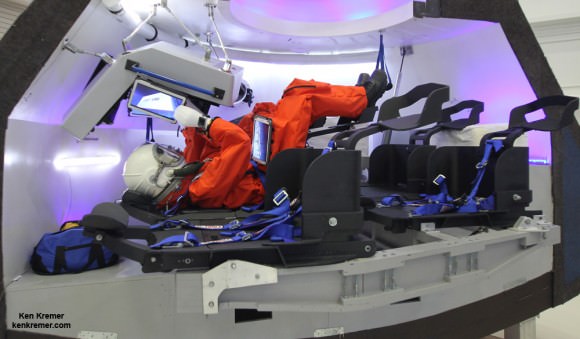
Bolden has repeatedly stated that NASA’s overriding goal is to send astronauts to Mars in the 2030s.
To accomplish the ‘Journey to Mars’ NASA is developing the Orion deep space crew capsule and mammoth SLS rocket.
However, both programs had their budgets cut in the FY 2016 proposal compared to FY 2015. The 2015 combined total of $3.245 Billion is reduced in 2016 to $2.863 Billion, or over 10%.
The first test flight of an unmanned Orion atop the SLS is now slated for liftoff on Nov. 2018, following NASA’s announcement of a launch delay from the prior target of December 2017.
Since the Journey to Mars goal is already underfunded, significant cuts will hinder progress.
Orion just completed its nearly flawless maiden unmanned test flight in December 2014 on the Exploration Flight Test-1 (EFT-1) mission.

There are some losers in the new budget as well.
Rather incomprehensibly funding for the long lived Opportunity Mars Exploration Rover is zeroed out in 2016.
This comes despite the fact that the renowned robot just reached the summit of a Martian mountain at Cape Tribulation and is now less than 200 meters from a science goldmine of water altered minerals.

Funding for the Lunar Reconnaissance Orbiter (LRO) is also zeroed out in FY 2016.
Both missions continue to function quite well with very valuable science returns. They were also zeroed out in FY 2015 but received continued funding after a senior level science review.
So their ultimate fate is unknown at this time.
Overall, Bolden was very upbeat about NASA’s future.
“I can unequivocally say that the state of NASA is strong,” Bolden said.
He concluded his remarks saying:
“Because of the dedication and determination of each and every one of you in our NASA Family, America’s space program is not just alive, it is thriving! Together with our commercial and international partners, academia and entrepreneurs, we’re launching the future. With the continued support of the Administration, the Congress and the American people, we’ll all get there together.”
Stay tuned here for Ken’s continuing Earth and planetary science and human spaceflight news.


